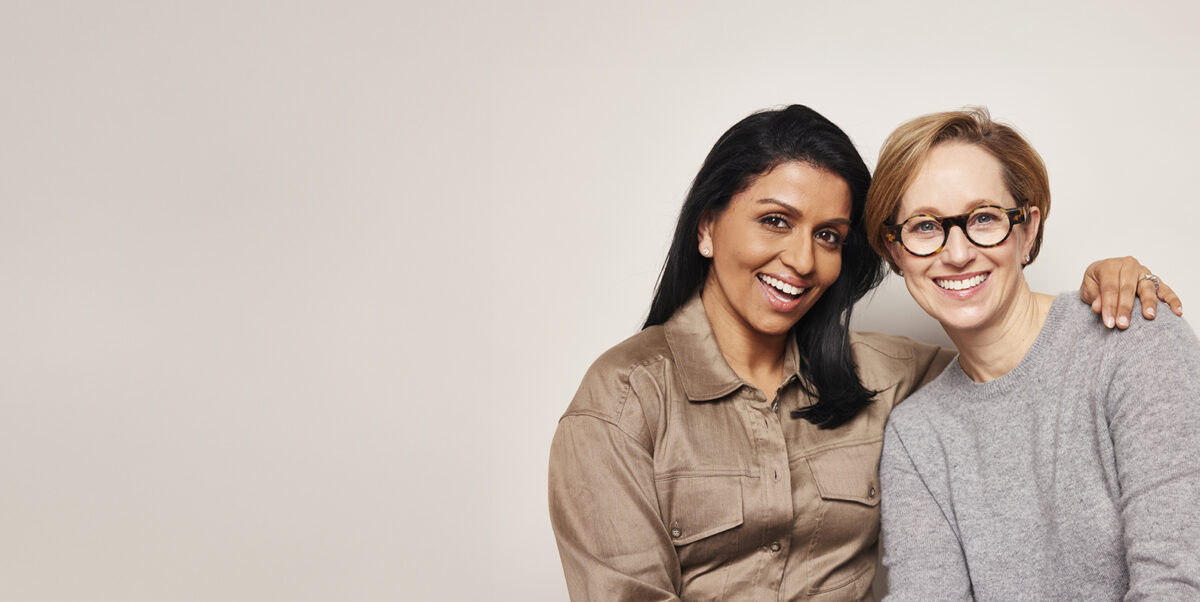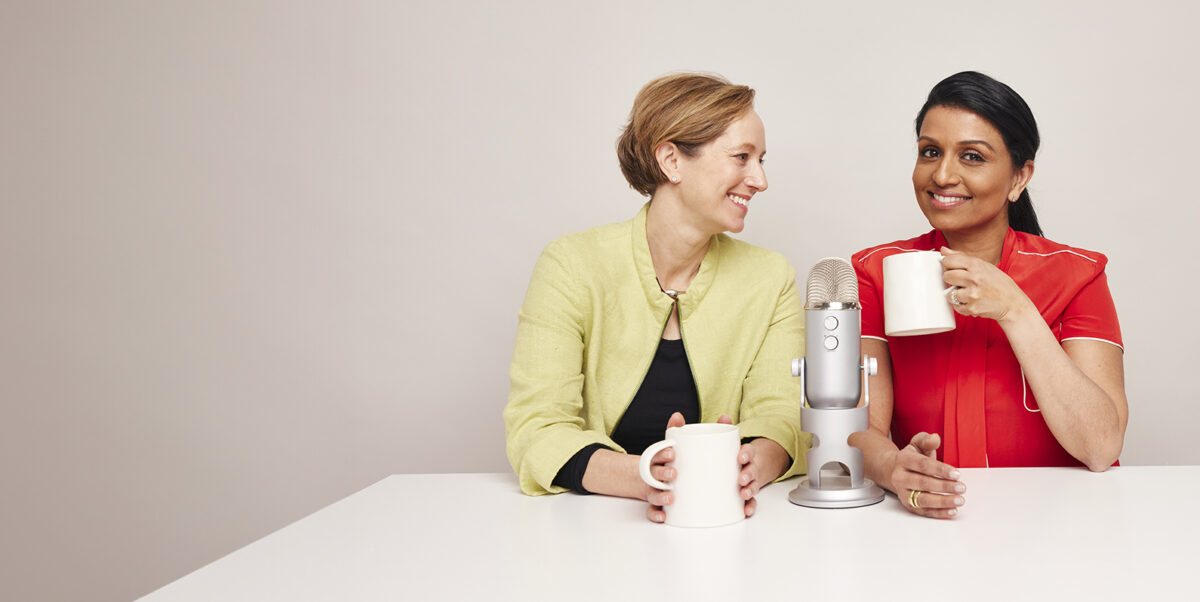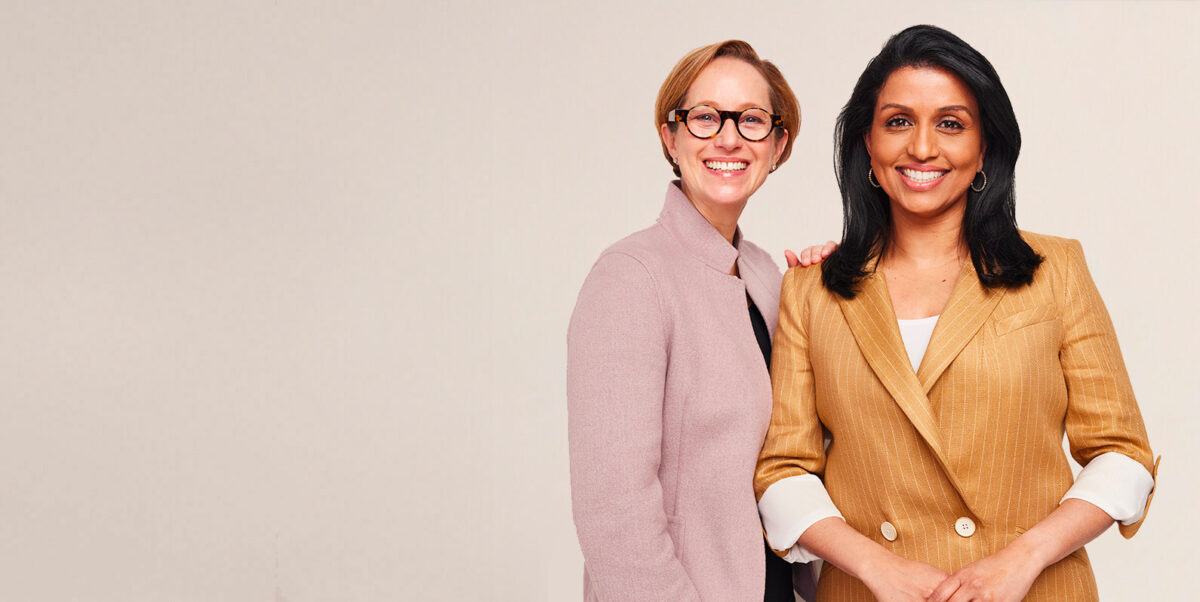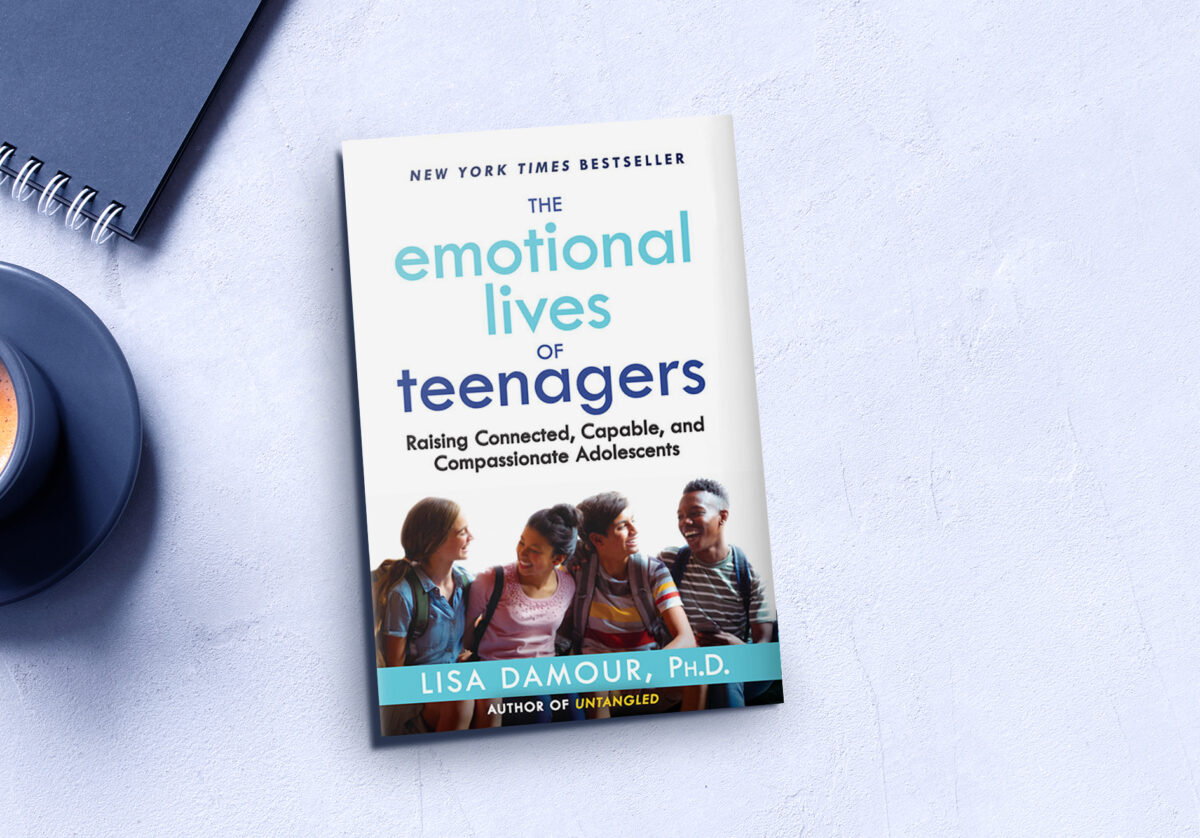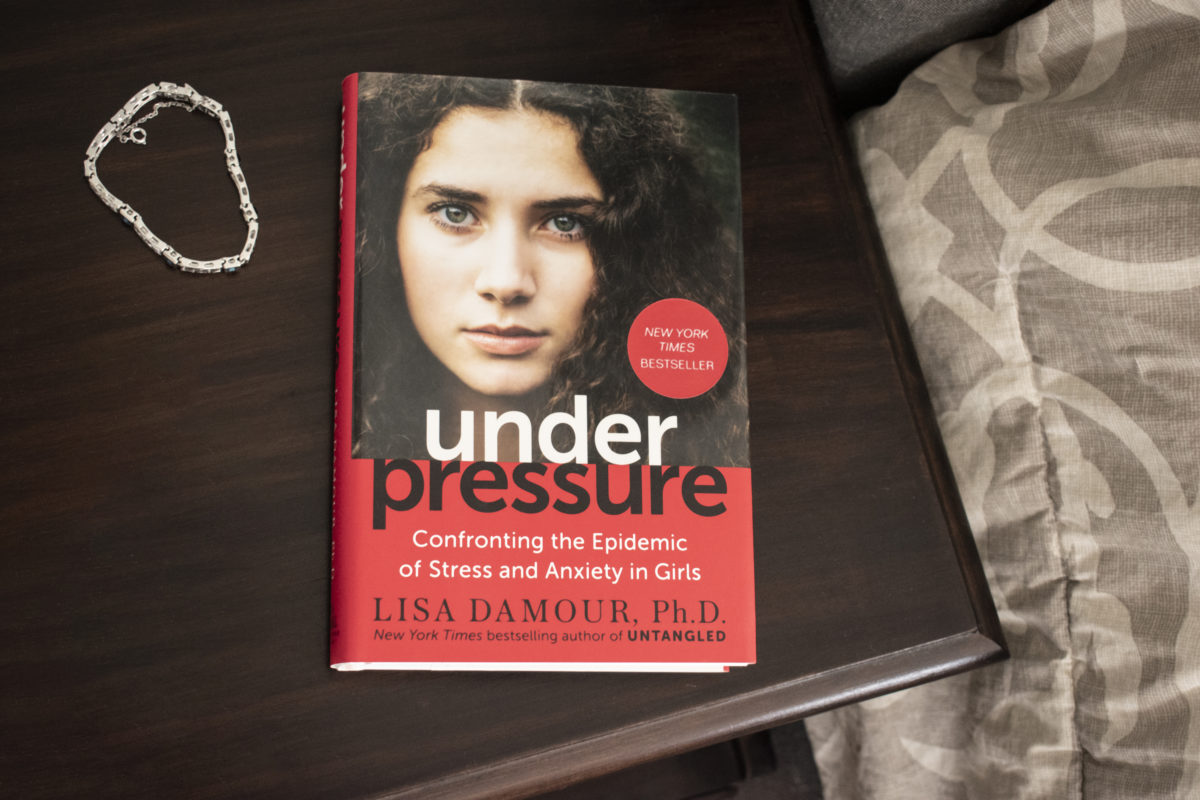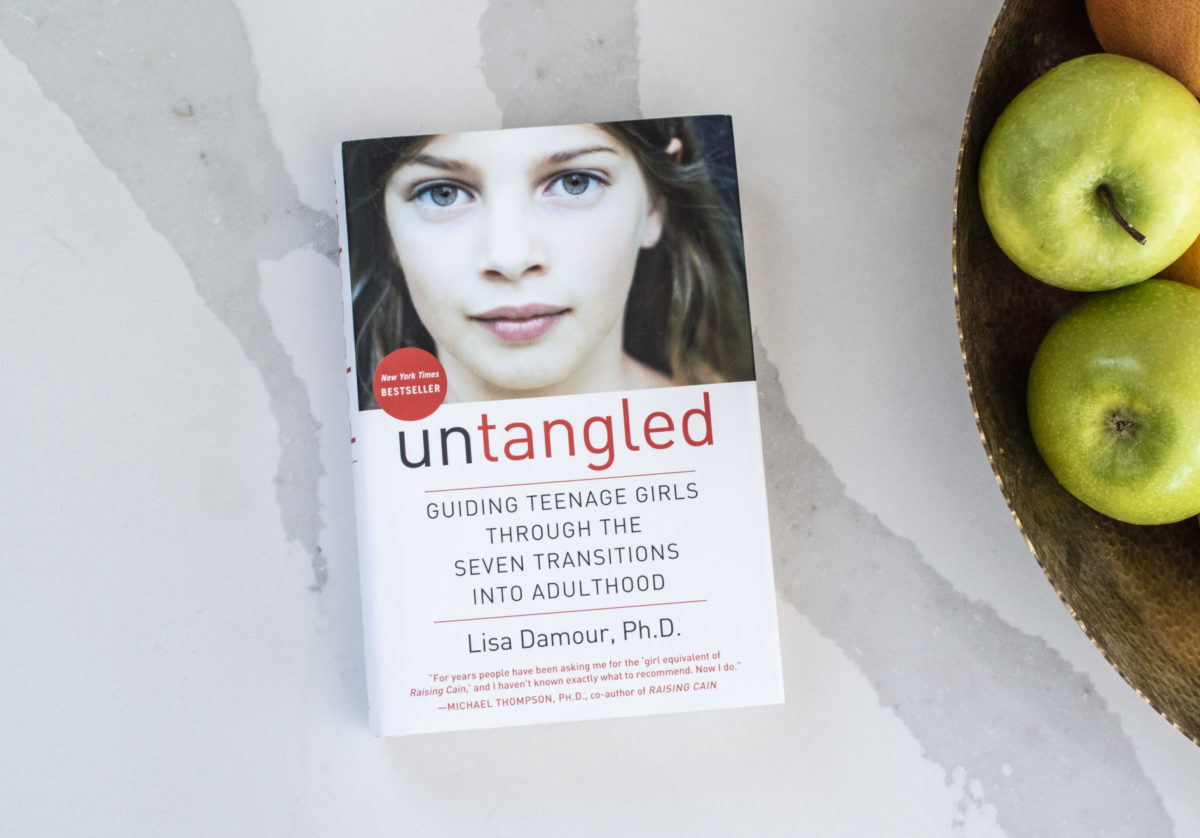Parents often find themselves caught between frightening headlines about the dangers of social media and kids who want access to it. Dr. Lisa and Reena address a letter from a parent of three – ages 9, 12, and 14 – asking for guidance. Drawing on research findings and clinical experience, this episode covers when to consider allowing social media, sensible rules for responsible use, the role of gender, and how to minimize social media’s downsides. Dr. Lisa and Reena offer insights, tips, and practical strategies for parents who are navigating the challenging waters of social media. Tune in for realistic and informed advice on safeguarding your child’s digital well-being.
January 9, 2024 | 30 min
Transcript | Will Social Media Harm My Kid?
The Ask Lisa Podcast does not constitute medical advice and is not a substitute for professional mental health advice, diagnosis or treatment. If you have concerns about your child’s well-being, consult a physician or mental health professional.
The following transcript has been automatically generated by an AI system and should be used for informational purposes only. We cannot guarantee the accuracy, completeness, or timeliness of the information provided.
Reena Ninan:
Episode 152, Will Social Media Harm My Kid?
So I finally gave in. I didn’t want to, but over Christmas I got my 11-year-old daughter a cell phone. I realized either I get her cell phone, she’s involved in so many activities and we’ve just kind of had a little bit of a difficult year, both of all of us staying in touch. So either I get her cell phone or I start to pay the cell phone of her friends where she’s calling from all the time to reach me. So we decided to get her her own phone.
Dr. Lisa Damour:
You’ll love it. I mean, I will tell you Reena, I like being able to reach my kid and I got my younger daughter a cell phone sooner than I got my older daughter. And it’s nice because I’ll be like, all right, I’m five minutes away. I’m on my way. I mean, it’s nice to be able to text your kid.
Reena Ninan:
So I wanted to get her an Apple watch, so we’re just texting and that was it. And she can message back. And I think it was because of social media. I just don’t want her to have any social media. And I know this is horrible to look at the gender of kids, like my son’s a boy. He doesn’t have social media either, but I would feel more comfortable letting him on than her. And anyway, she doesn’t have social media, but it just got us thinking and we got this incredible letter about looking at social media and how do you make sure, it’s a constant topic, that it doesn’t harm your kid. I’m going to read this to you, Lisa.
Hi, Dr. Lisa. I want to write in because I’m getting so worried about social media as my kids grow older and I have no idea how to navigate it.
As a mom of three ages, 9, 12, and 14, I find myself at a loss when it comes to navigating this digital landscape. My oldest, who’s in eighth grade, is starting to express a desire to get social media as she keeps talking about how all of her friends have it. However, I can’t help but worry about the unrealistic standards it sets and how that could affect her development and self-identity. Am I crazy for not wanting her to get Instagram and TikTok? I want her to grow up like an average kid and not miss out on things her friends are doing. I just wish social media wasn’t so toxic, especially for girls. Thank you. Alright, first off, I love that this is a parent who has older kids and is still struggling with it. Makes me who’s on the early side of this feel better, but do you think this parent is right to be worried?
Dr. Lisa Damour:
I do think there’s plenty of data that tell us that we want to be really, really cautious about social media. The gender piece is trickier, I think, than the media has laid out for us, and I want to really unpack that. But I think part of what is so hard is that there have been these very, very terrifying headlines like social media is going to destroy your child. And what they’ve done is they’ve set their parents on really kind of a collision course with their teenagers getting this very, very frightening information about social media. And then we have, I mean, the fact that she’s got a 14-year-old who still doesn’t have it, she’s done an incredible job of holding it off. We have a 14-year-old, 15-year-old and often much younger kids who are lobbying really, really hard for it. And it really creates a tremendous amount of friction at home. I think there’s a more nuanced, subtler story about social media when it’s harmful, when it’s not, what to look for, how to protect your kids. That doesn’t always get across in the media and that’s the one that we want to try to dive into and really tease this apart a little bit because it is scary. And I know the headlines are scary.
Reena Ninan:
So is social media really worse for girls?
Dr. Lisa Damour:
So Reena, here’s how I want to answer that. One of the short answer is I’m not sure and we don’t really know, but the media and the research we have right now suggest as much. But here’s the problem, and this is sort of nerdy but you know me, one of the things that I remember learning in my research methodology classes, it was a story they told us is it’s a story, it’s a made up story, but it’s a great story. A cop was walking down the street one night and he sees a drunk guy looking on the sidewalk under a streetlight. And so he goes up to the drunk guy and he’s like, what are you doing? And he’s like, I dropped my car keys. And the cop says, are they here under the light? Is this where you dropped them? And the drunk says, no, but this is where the light is.
Okay.
So this is a great story. When we think about research findings, research methodologies is that sometimes we’re only looking where we already have light because we’re familiar with those areas. So one of the areas we’re really familiar with researching is body image, girls, how what girls look at affects how they think about themselves. We’ve been studying this since the days of magazines and so there is a lot of research on the topic of when girls in particular look at very appearance oriented social media, how does it affect how they feel about themselves? And lo and behold, it makes ’em feel lousy. So we have those findings. Okay, Reena, here’s what I’m hearing from kids. When I ask sixth and seventh graders and I spend a lot of time doing this, when you’re online and you’re seeing stuff that you’re not sure is okay, what are you seeing?
Number one, I get two very different sets of answers depending on the gender of kids I’m talking to. So girls as a group will say, I’m seeing kids being really mean to each other that comes up a lot. They will say, I’m seeing some racist content. They will say, I’m seeing people sharing videos about other people that are mean. If I ask, they will say, yeah, there’s some appearance stuff. And certainly kids can get themselves into algorithms where there’s a lot of it. Okay, if you ask the boys, which research wise we have not done a great job of this. When you are online, what do you see that may not be okay? And again, this is all anecdotal. This is not crisp, clean gold standard research boys will be like tons of racism, tons of homophobia. Interestingly, anti feminism. So not, which is sexist, but not direct sexism, but more like feminism is lousy, which I guess is frankly sexist, but it’s not the sort of flagrant misogyny which also exists. And then boys are seeing all of this body image stuff around fitness, muscularity having a lean 30 pack, there’s all these memes about it, all this stuff that’s completely crummy for boys. I know it’s crummy for boys and I know that they’re getting a lot of exposure to, but it’s not a lamppost in our research literature. So you’re hearing a lot about the harms and dangers for girls which are real. That doesn’t mean there aren’t harms and dangers for boys. We’re not asking, I think the questions that would surface that yet.
Reena Ninan:
I’m so glad you flagged the boys and what they are seeing from your little small focus group there of life. Because I don’t think we think often there’s so much attention on body image and mean girl action on social media, but we don’t hear about that. The reality. Lisa, you’re so good about technology, about being real, of where we are in the moment and having good measure on that. Can we really ban social media and is if there’s a gradual, remember we had a surgeon general on to kick off our season this year and I believe he said he doesn’t want his kids to have social media while they’re in school. So what’s your sense of when it’s okay to introduce social media? How much? How long? Is there any guidance, any research on that?
Dr. Lisa Damour:
Yes. So what I will say is what the research tells us, and this is also my guidance, don’t give it to young kids if you can help it. And by young, I would say under the age of 14.
Reena Ninan:
14, why 14?
Dr. Lisa Damour:
So 14 is a really critical year neurologically. It’s the year. And again, this is averages. So we’re talking about bell curves. It’s the year when kids get skepticism, when neurologically, the ability to question and doubt things becomes available. And anyone raising a 14-year-old knows this because up until 14 you’re like, don’t go outside with wet hair. And they roll their eyes and then at 14 they’re like, that is nonsense. You are totally making that up. I mean that they start to challenge us in all sorts of ways. I remember one time walking into my grocery store I use every week and seeing a woman there who works there who I gotten to know, and she hadn’t seen my older daughter for a long time.
And she said, how is she? And I said, well, she’s 14. And she smiled at me. I said, she is no longer buying what I am selling. This is the nature of 14 year olds, so it can be a pain in the butt at home. It’s a really good way to look at social media. The problem with kids in their skepticism phases is they take it in too whole, right? Whatever’s coming across on social media, they’re not questioning it enough. So I would say 14, if you can get there, absolutely. But you’re asking about can you really do this? And here’s what I will say, Reena, we do have research telling us to be cautious about social media. It can do harm and we can, I want to get us even more deeply into exactly how and why. The other thing that harms kids is social isolation. We know that too.
Kids need friends. They really need friends. And so what you’re in is this tension between how much social media will prevent social isolation, and you’re basically weighing these two things against each other, which is not ideal, but that is the reality of where we often end up.
Reena Ninan:
What do you think the rules are the parents should have?
Dr. Lisa Damour:
I think the rules are, and I’m thinking about this letter writer, I think you provide as much social media as is needed to maintain the real friendships they have. I think that that’s the key. So I have said
Reena Ninan:
Minute time limit on this? 10 minutes a day.
Dr. Lisa Damour:
Well, I mean there’s also time questions, but even in terms of having access to a platform. So I have basically said to my younger daughter, I’m like, you are on texting until you cannot maintain your friendships without a platform. A lot of kids are on Snapchat right now, and my goal is to get her to 15 or older before she’s on those. We may end up in a tension around this. We will sort it out. And she knows that’s my goal. I’ve actually said, I said, this is the problem. This is where it’s better to be older. I’m hoping you can maintain on texting alone. I’ve been really clear on that. So
Reena Ninan:
You told her 15 is what you believe is the good age to have access to social media?
Dr. Lisa Damour:
If that can be when we start, I would be more comfortable with that than certainly she knows at 13, that’s a non-negotiable. That’s not happening. But again, I have the advantage, Reena, of we’ve been having these conversations since they were little. I know there are a lot of parents who were like, well, rats, my kid is 12 and has social media, what do you want me to do? So we’ll talk about that. So I think that ideally that’s how I would have people do it. And then I think there’s things you can do to put some parameters around it. I do not think cell phones should ever be in a bedroom that limits how much time kids spend on social media.
I don’t think kids need every platform. They may need the one that helps ’em stay connected. So you can make a conversation about that. I also think when it comes to social media, there’s a lot about what kids are doing when they’re there. If they are mindlessly scrolling, Reena, and this is where some of the data can be very helpful to us. There seems to be a distinction between kids who are engaged on social media, commenting, posting, talking versus kids who are just scrolling, scrolling, scrolling, scrolling mindlessly. It seems like the mindless scrollers are much more harmed by social media than the kids who are engaged. That is some of the data we have. Although there’s a bit of an asterisk, it may not be the same across all cultural groups. It may not be the same for different ethnicities, like we’re getting some early data showing that for black teenagers, the distinction between scrolling and engaging may not be as clear in terms of the harms done.
Reena Ninan:
Why is that? Why is there that difference?
Dr. Lisa Damour:
We have no idea. And this is the thing, I mean this is the thing. Even as I run through these research findings, I get it. The way we have done the research and the way we communicate the research, if a lot of parents feel like they’re like, forget it, this is confusing or this is overwhelming or this is not clear enough. You’re right. You’re right. I think we’re struggling as social scientists to bring this across in a way that is useful. But I also think you and I, Reena, can start to think through like, well, what are some basics? What are some parameters that can help parents feel not at the mercy of social media and also not at the mercy of a kid who is furious that they don’t have it.
Reena Ninan:
I want to go back to the parents or many of us parents out there who may have given social media early on, we just didn’t know what to do. Can you claw it back? And if you do, how do you do that?
Dr. Lisa Damour:
I think it’s hard. I think it’s easier to claw it back if you can identify a problem. So the kinds of problems I would have people looking for at any point developmentally, but certainly in younger kids is the algorithms are so alluring, which they are that the kid is spending way, way more time than they meant to. So then you might try to put some time parameters around it. I think the other thing to watch out for is what are they looking at? And if you have any reason to think that your kid has gotten pulled down some nasty algorithm rabbit hole, that is for me a situation that’s very serious and maybe one where you say, look, I just looked at your for you page, or I just looked at your feed and this is so not okay, we’re going to take a pause just because you need to understand this is not all right, this is not acceptable.
I think those kinds of things can make a difference. I think if a kid’s not getting enough sleep and the phone is in the room, you take it out. That’s another way that you could put some parameters. So if you do need to try to walk it back, I think if you can say you’re looking at it too much, or what you’re looking at is really awful or inappropriate or looking at it is getting in the way of your sleep, which is critical to mental health, then I think you have a leg to stand on in trying to bring it back under control.
Reena Ninan:
I tried to regulate and at one point my son was interested in Snapchat and we were checking it out together and I accidentally hit like or something on one of this, you’re not supposed to. And he was so upset. So upset, I had done that. But for parents who don’t even understand some of these platforms that they’re on, how do you check? How do you know that they aren’t going down a rabbit hole?
Dr. Lisa Damour:
So this is why it’s better to keep a constrained and delay because it’s very hard to supervise once you’ve handed it over. I am a huge fan of commonsensemedia.org. It’s a brilliant, brilliant platform and they have really done the legwork on a lot of these social media platforms. So if your kid is lobbying for it, I would say go over to common sense media.org. You will learn all about Snapchat, what to worry about, how to think about it. And that can be a place where you can have a shared conversation with your kid about, okay, maybe we can do this one social media app, but we’re going to do it with this shared understanding and with these rules coming out of the gate. The other thing I want to just underscore because it’s what I’m hearing from kids, but it’s not what I’m necessarily hearing when we talk about the research, I’ve been pretty impressed by when kids talk with me about what’s going on online, how much they talk about kids being mean to one another.
And I suspect that the kids who are telling me about it are just witnesses to it. They’re not themselves participating. I sort of feel like if you’re doing it, you’re probably not complaining about the fact that it’s happening, that you’re engaged in it. And it’s made me think a lot more about conversations we need to be having with our kids about what they witness online among their peer group, both because I think it’s probably upsetting to them. And also I’m obsessed with norms. We don’t want this to seem normal to them. Kids being jerks, online, kids making fun of each other, kids showing videos, and then of course kids posting images of them with their friends where everyone who’s not included can see it. This is another source of a lot of pain. These are the conversations I think we should be having to say, how are kids treating each other are they’re doing things that are hurtful. It doesn’t mean you’re going to prevent them. It doesn’t mean you’re going to shut it down, but you don’t want your kid to think that this is just how people act.
Reena Ninan:
So having those conversations about things you think might be surfacing that they’re seeing and letting ’em know it’s not okay, it’s not okay to talk that way about a certain race or gender or
Dr. Lisa Damour:
Even just making fun of a kid in the class around stuff that’s not about identity based, just mean. And I think probably the way to have those conversations is to say, are you watching kids be unkind online and ask in a way that makes it clear that no one’s in trouble? And then say, what do you think of that? Or what do you make of that? And then getting a conversation going about like, yeah, it’s not all right. And what does it feel like to see that all the time? And do you worry that because people are seeing it, they’re starting to think like it’s an okay thing to do if a lot of kids are doing it?
Reena Ninan:
So as we step back, I’m just curious, what’s the big picture here with social media that regardless of whether your child is 10 or 16, what do we need to keep in mind? Because ultimately technology is here to stay, and I want to create some good technological hygiene, if that’s the word. I want them to understand how to regulate and use it and navigate it, that it doesn’t take ’em down a rabbit hole. What would you say parents need to keep in mind when dealing with social media?
Dr. Lisa Damour:
So I would say delay, delay, delay if you can, and minimize, right? They don’t need all the apps, whatever platform, the one that their friends are really, really using that they feel must be part of their life in order to stay meaningfully engaged. If you get to a point where you get there, I don’t think they probably need all the platforms. They may need one, maybe two. I think being really, really clear about where phones go and where they don’t, I think is a way that we can keep some governors on this. I think keeping kids busy, I think there’s value. I mean, we don’t want to over schedule kids, but I also think kids, if they have enough to do with themselves, if they have jobs, if they have afterschool stuff, that can actually be a meaningful way to limit how much time they have online.
And I think being really realistic about the fact that the harms are a wide range. They run all the way from kids spending time online that would be better spent elsewhere. That’s kind of one concern to kids witnessing a lot of meanness to kids, witnessing incredible racism and misogyny and sexism and homophobia to kids getting trapped in algorithms that suggest that their body has to be incredibly thin or incredibly fit. And that being the kind of thing that sparks an eating disorder, right? I mean, so the range of harms is very, very wide. What we want to do is talk with kids about the stuff at the upper end and our concerns about keeping those under control and why we’re limiting and why we’re delaying. And then for the things that are probably more unavoidable, the kids are going to see meanness having that be a conversation that we just make clear we’re here to discuss it. We don’t want that to come to seem normal, but we’re not going to judge our kid for the reality that is coming across their screen.
Reena Ninan:
And I want to also ask you for parents who have decided to keep a close hold on social media and not to give access to it and wait as long as they can for cell phones and social, what’s the other side of it as they’re trying to protect their kid that they should also keep in mind?
Dr. Lisa Damour:
I think as long as their kid has friends and feels meaningfully connected to their friends in real life, the parent can hold and try to delay. I have though Reena in my practice come to a place where I’ve said to families, your kid’s going to need texting now. So it was texting that the parents didn’t even want that. All the plans were made on text, everything was going on, and these are sixth and seventh graders. They’re not going to be like, oh, and then call that person’s parent or call their home phone, right? I mean, it’s not going to happen. So I have found myself recommending more digital access than the parent themselves was willing to give at the moment or had been giving because the kid was becoming totally isolated. And that is problematic. So again, I mean, I wish this were simpler. I wish this were clear cut. It is not. But the bottom line is that this is the tension that you are trying to manage the potential harms of social media against the also real harms of social isolation and how do you delay, delay and minimize and minimize so that you can try to thread that needle?
Reena Ninan:
A lot to think about here. But I have to say, I always love this about you when you talk about technology, about facing the reality of where we are and how important it is in life in general, I understand delaying, but we struggled and went through this and ended up giving her a cell phone way earlier than I thought I would.
Dr. Lisa Damour:
But no social media, right?
Reena Ninan:
No, no social media.
Dr. Lisa Damour:
And the nice thing is if you don’t start with it, you can hold it off.
And I think that that’s the thing that’s so key is giving a kid a phone doesn’t mean that giving them everything. It can be a gradual process.
Reena Ninan:
It’s really good. So what do you have for us, Lisa, for Parenting to Go?
Dr. Lisa Damour:
Here’s something I’ve been thinking about, Reena. I think sometimes we can see our kids looking at social media and feel like it’s just so dumb. I mean, even if it’s none of the harms, even if it’s none of the things to be worried about, it can seem kind of silly that they’re just spending time looking at cat videos or sports clips. And we can think, I was actually just thinking about our episode about optimization. Couldn’t, yeah, couldn’t their time be better spent? And I will say one way I have come to feel gentler about that is I think about how much garbage TV I watched when I was a kid. I watched so much Gilligan’s Island, it was unbelievable. And so if parents are feeling anxious about the fact that sometimes our kids are just looking at mindless stuff, I would also say I think there’s room for mindless stuff in being a kid, and maybe it’s part of restoration is some mindless stuff. So let’s also make the distinction between truly harmful things that kids should not be looking at and mindless stuff that’s probably better for them than Gilligan’s Island ever was for me. That can be part of healthy development and even maybe restoration.
Reena Ninan:
I think we should put Gilligan’s Island on TikTok if it’s not already, because that was a very special show.
Dr. Lisa Damour:
Yeah, I don’t think it’s going to hold up well Reena. I think it’ll be very interesting to see how Gilligan’s Island lands these days. But I will tell you, watch tons of Gilligan’s Island and lived to tell the tale.
Reena Ninan:
I love it, Lisa. I’ll see you next week.
Dr. Lisa Damour:
I’ll see you next week.
More resources
